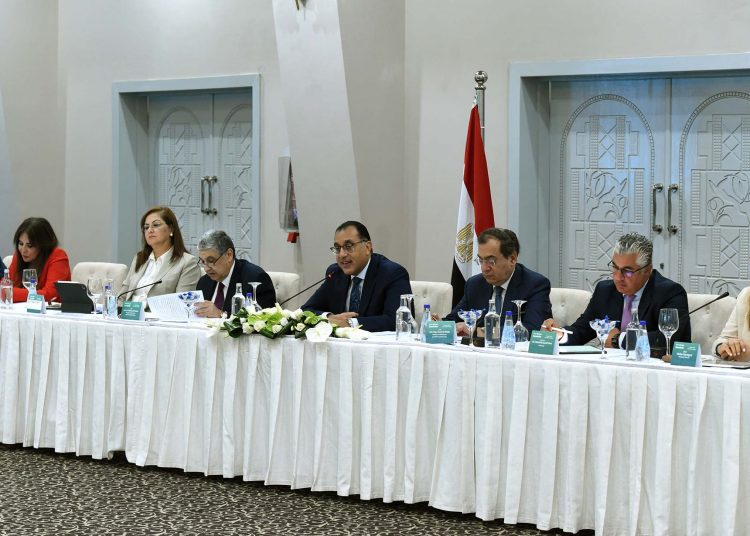Egypt’s Prime Minister Moustafa Madbouli said that Egypt adopted a series of important measures that enabled it to occupy a competitive place in the green hydrogen sector, thanks to the political leadership’s keenness on transition to a green economy as outlined in Sustainable Development Strategy (SDS): Egypt Vision 2030.
This came during the fourth edition of the roundtable on the green hydrogen industry in Egypt that was held in New Alamein city.
The gathering was attended by Electricity and Renewable Energy Minister Mohamed Shaker, Petroleum Minister Tareq el Molla, Planning and Economic Minister Hala el Saaed, Chairman of the Suez Canal Economic Zone (SCZONE) Walid Gamal El Din and CEO of the Sovereign Fund of Egypt Ayman Soliman.
The roundtable was also attended by Heike Harmgart, the Managing Director for the Southern and Eastern Mediterranean (SEMED) region at the European Bank for Reconstruction and Development (EBRD), and a number of representatives of major companies working in the field of green hydrogen and renewable energy.
The premier said that Egypt finalized the second update to the Nationally Determined Contributions (NDCs) plan, through which Egypt aims to raise the share of renewable energy in the energy mix to 42% by 2030 instead of 2035.
Egypt has enormous and promising potential in producing renewable energy at competitive prices, Madbouli said, saying solar and wind energy are among the main components of the green hydrogen industry.
Egypt has the necessary infrastructure to produce green hydrogen and then export it to Europe, Madbouli said.
There is a high domestic demand for the use of green hydrogen in energy-intensive industries, he further noted.
The Suez Canal, which is the most important waterway in the world, is crossed by about 15% of global maritime trade annually, which is an important opportunity to provide green fuel services for all transiting ships, he said.
He added that Egypt signed more than 20 memorandums of understanding with major companies developing green hydrogen.
The agreements, worth about dlrs 83 billion, aim to produce annually 15 million tons of green ammonia and green methane, he added.






Discussion about this post